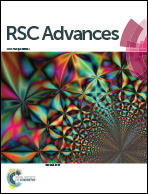A low-energy milling approach to reduce particle size maintains the luminescence of strontium aluminates
Abstract
Decreasing the particle size, improving the distribution of the particle size, avoiding a high agglomeration state and maintaining the photoluminescence response of SrAl2O4 doped with Eu2+ and Dy3+ powders is still a challenge in the processing of this phosphorescent material. Here, we explore different processes to achieve this objective. The standard route is a wet milling process, however the presence of a liquid medium promotes the hydrolysis of the material, and therefore its results are deleterious for its functional properties. These problems may be avoided if the milling is carried out by means of a dry process. For this reason, the powders are milled following two different procedures: high and low energetic dry milling processes. A correlation between the reduction of particle size and intensity of the photoluminescent emission has been evaluated. In this context, this study develops different processing routes to reduce the particle size on phosphor powders, seeking an agreement between the optical properties and the size of the powders, that depend on the final requirements.


 Please wait while we load your content...
Please wait while we load your content...